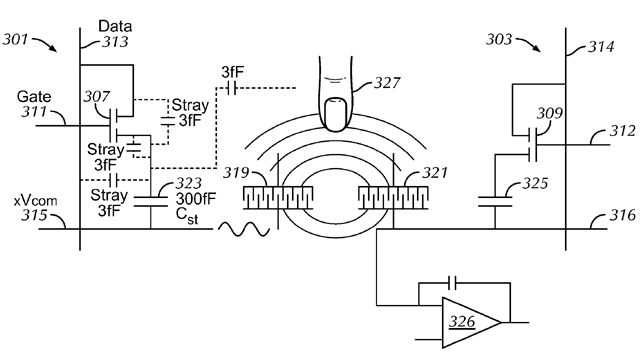Thinner screen - brighter display
How can you make the touch screen thinner and brighter at the same time? Use pixels, says Apple.

Touchscreens and Multi-Touch technology make up the vast majority of Apple's research to improve the user interface in the future. The iPhone is representative of some of these user interface paradigms, moving us into higher mobile technologies. Since almost all interactions with the iPhone include a touch screen, Apple hopes to improve the technology on the touch screen with each pixel of the LCD.
')
Apple filed a patent application , published yesterday, on a “display with dual-capacitive feature functionality.” Mixing the display and sensing functions of each individual pixel makes the touch screens thinner, lighter and brighter than they are at present.
Touch screens are now created by applying the touch panel over a traditional LCD panel. The touch panel is basically an array of capacitors, most often consisting of transparent indium and tin oxides.
The need for additional layers that cover the LCD screen means that it becomes “thick”, and, despite the fact that the touch panel is transparent, it absorbs light coming from the LCD display. Apple's solution involves using each pixel as a capacitive sensor, eliminating the need for an extra layer for a separate touch sensor.
Apple's idea takes advantage of fast switching to control pixels in an instant. Switching occurs fast enough to give a clear, bright display. The elimination of a separate sensor layer also makes the display thinner, lighter and brighter.
Apple offers its solutions for mobile devices, referring to iPhones, Ipods, and even MacBooks.
Source: https://habr.com/ru/post/80239/
All Articles